The Ultimate Guide to
Sugars &
Sweeteners
Discover the Taste, Use, Nutrition, Science, and Lore of Everything from Agave Nectar to Xylitol
Alan Barclay, phd , Philippa Sandall, and Claudia Shwide-Slavin, MS, RD, CDE

NEW YORK
THE ULTIMATE GUIDE TO SUGARS AND SWEETENERS: Discover the Taste, Use, Nutrition, Science, and Lore of Everything from Agave Nectar to Xylitol
Copyright 2014 Alan Barclay, Philippa Sandall, and Claudia Shwide-Slavin
Foreword copyright Jennie Brand-Miller
All rights reserved. Except for brief passages quoted in newspaper, magazine, radio, television, or online reviews, no portion of this book may be reproduced, distributed, or transmitted in any form or by any means, electronic or mechanical, including photocopying, recording, or information storage or retrieval system, without the prior written permission of the publisher.
Many of the designations used by manufacturers and sellers to distinguish their products are claimed as trademarks. Where those designations appear in this book and The Experiment was aware of a trademark claim, the designations have been capitalized.
The Experiment, LLC
220 East 23rd Street, Suite 301
New York, NY 10010-4674
www.theexperimentpublishing.com
This book contains the opinions and ideas of its authors. It is intended to provide helpful and informative material on the subjects addressed in the book. It is sold with the understanding that the authors and publisher are not engaged in rendering medical, health, or any other kind of personal professional services in the book. The authors and publisher specifically disclaim all responsibility for any liability, loss, or riskpersonal or otherwisethat is incurred as a consequence, directly or indirectly, of the use and application of any of the contents of this book.
The Experiments books are available at special discounts when purchased in bulk for premiums and sales promotions as well as for fund-raising or educational use. For details, contact us at .
Library of Congress Cataloging-in-Publication Data
Barclay, Alan W.
The ultimate guide to sugars and sweeteners : discover the taste, use, nutrition, science, and lore of everything from agave nectar to xylitol / Alan Barclay, PhD, Philippa Sandall, and Claudia Shwide-Slavin, MS, RD, CDE.
pages cm
Includes bibliographical references and index.
ISBN 978-1-61519-216-8 (pbk.) -- ISBN 978-1-61519-217-5 (ebook) 1. Sweeteners. I. Sandall, Philippa. II. Shwide-Slavin, Claudia. III. Title.
TP421.B37 2014
664'.1--dc23
2014027435
ISBN 978-1-61519-216-8
Ebook ISBN 978-1-61519-217-5
Cover design by Christopher Brian King
Cover photographs StockFood/Richard Jung Photography
Text design by Pauline Neuwirth, Neuwirth & Associates, Inc.
Manufactured in the United States of America
Distributed by Workman Publishing Company, Inc.
Distributed simultaneously in Canada by Thomas Allen & Son Ltd.
First printing November 2014
10 9 8 7 6 5 4 3 2 1
CONTENTS
by Jennie Brand-Miller, PhD
PART 1
PART 2
PART 3
CHALLENGE 1:
CHALLENGE 2:
FOREWORD
 y guess is that many of you reading this book are trying to improve your dietary habits. No doubt, high on your to-do list is cutting down on sugar (the stuff described as pure, white, and deadly). But I will hazard another guess: you havent cut all sweetness out of your lifeyouve just exchanged one source of sweetness for another. Now youre wondering, is the new source a good one, a better one, or actually doing more harm than good? Well, thats exactly why Alan Barclay, Philippa Sandall, and Claudia Shwide-Slavin wrote The Ultimate Guide to Sugars and Sweeteners. To my knowledge, they are the first to bring all this information altogether in one consumer-friendly, very readable little book. Theyve done the hard work for you. They tell you not only what each sugar or sweetener is and where it comes from, but also its history, chemistry, calorie content, culinary applications, andwherever they canits effect on blood glucose (in other words, its glycemic index).
y guess is that many of you reading this book are trying to improve your dietary habits. No doubt, high on your to-do list is cutting down on sugar (the stuff described as pure, white, and deadly). But I will hazard another guess: you havent cut all sweetness out of your lifeyouve just exchanged one source of sweetness for another. Now youre wondering, is the new source a good one, a better one, or actually doing more harm than good? Well, thats exactly why Alan Barclay, Philippa Sandall, and Claudia Shwide-Slavin wrote The Ultimate Guide to Sugars and Sweeteners. To my knowledge, they are the first to bring all this information altogether in one consumer-friendly, very readable little book. Theyve done the hard work for you. They tell you not only what each sugar or sweetener is and where it comes from, but also its history, chemistry, calorie content, culinary applications, andwherever they canits effect on blood glucose (in other words, its glycemic index).
I expect many of you will find it surprising to hear a professor of nutrition express the view that sugars and sweeteners have a place in modern diets. Perhaps it comes from a university training in food science, combined with a passionate interest in diet and human evolution. A diet with a moderate amount of added sugars (about 5 to 10 percent of total energy, or 25 to 50 grams in a 2,000-calorie diet) is the amount considered commensurate with a nutritious diet by the World Health Organization. I dont believe that its helpful to strictly avoid all sources of added sugars.
Why? For one, its highly likely that youll replace those calories with something else. Not at a conscious level, of course, but in the appetite center of your brain, hormones and other signals will ensure youre maintaining your usual body weight.
Research shows us that if you cut sugar calories from your diet, theres a good chance youll eat more calories from fat, particularly saturated fat (the so-called sugar-fat seesaw). Consuming more saturated fat will definitely increase your risk of chronic disease. If youre careful to avoid both saturated fat and added sugars, perhaps youll eat more refined fats and oils that are also empty calories, just like added sugars. So youll have achieved nothing.
Or perhaps youll eat more starch, particularly the highly refined starches that are also empty calories and contribute to a high dietary glycemic load (think your typical French fries, white rice, white bread, and highly processed breakfast cereals). These foods raise blood glucose more than other sources of carbohydrates, and they also increase the risk of chronic disease. And theres a good chance youll consume more salt, too, because starchy foods are bland without it.
Concentrated sources of sugars have a long history as part of our diet. Sugars in fruit and honey have provided carbohydrate energy in human diets for millions of yearsever since primates began evolving on a steady diet of fruit and berries in the rainforests of Africa fifty million years ago. The appreciation of the sensation of sweetness runs deep in the human psyche. Our hunter-gatherer ancestors positively relished concentrated sugars such as dates, dried fruit, sugar bag, honey, and even honey ants. In literature and mythology, sweetness is linked with pleasure and goodness, and in everyday language we use terms associated with sweetness to describe the things we love (sweetie pie, honeymoon). Our first food, breast milk, is sweetin fact, its the sweetest of all mammalian milks.
We should, therefore, use added sugars judiciously to increase the intake of nutritious foods that might otherwise not appeal (think a little melted brown sugar on hot oatmeal, a swirl of date syrup on yogurt). With this thought in mind, I recommend this A-to-Z guide as the best, most up-to-date, and accurate source of information about all the sugars and sweeteners, new and old, in our diet.
Jennie Brand-Miller, PhD, author of the Low GI Diet Revolution series and Professor of Nutrition and Metabolism, School of Molecular Bioscience and Charles Perkins Centre, University of Sydney, Australia
April 2014
Introduction:
Seeking sweetness
 ur sweet tooth has a long history. It seems we have always been drawn to sweet things, but supply was generally limited, unreliable, and seasonaluntil now.
ur sweet tooth has a long history. It seems we have always been drawn to sweet things, but supply was generally limited, unreliable, and seasonaluntil now.
Next page
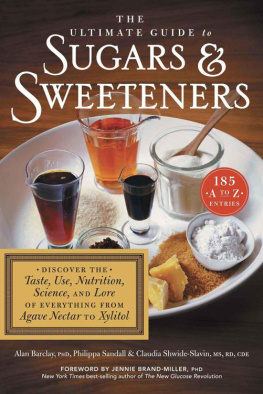
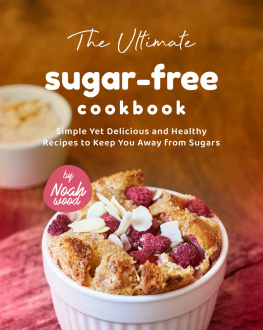


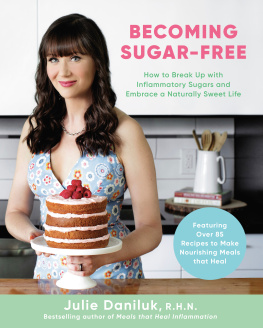
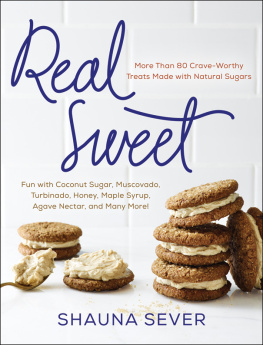
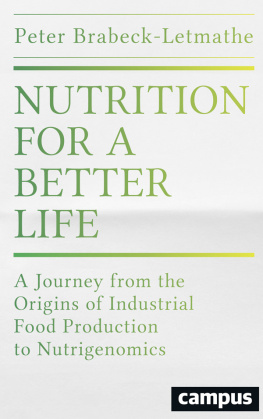

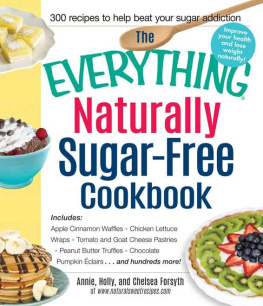
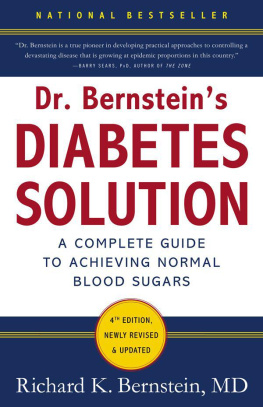
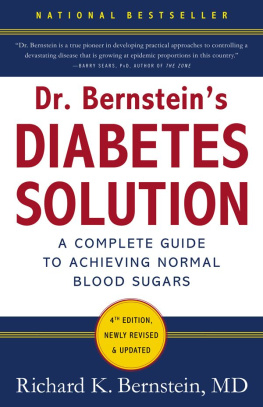
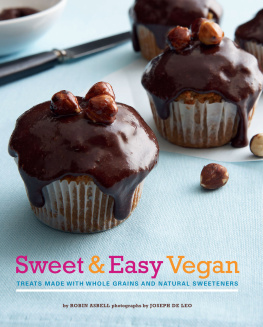

 y guess is that many of you reading this book are trying to improve your dietary habits. No doubt, high on your to-do list is cutting down on sugar (the stuff described as pure, white, and deadly). But I will hazard another guess: you havent cut all sweetness out of your lifeyouve just exchanged one source of sweetness for another. Now youre wondering, is the new source a good one, a better one, or actually doing more harm than good? Well, thats exactly why Alan Barclay, Philippa Sandall, and Claudia Shwide-Slavin wrote The Ultimate Guide to Sugars and Sweeteners. To my knowledge, they are the first to bring all this information altogether in one consumer-friendly, very readable little book. Theyve done the hard work for you. They tell you not only what each sugar or sweetener is and where it comes from, but also its history, chemistry, calorie content, culinary applications, andwherever they canits effect on blood glucose (in other words, its glycemic index).
y guess is that many of you reading this book are trying to improve your dietary habits. No doubt, high on your to-do list is cutting down on sugar (the stuff described as pure, white, and deadly). But I will hazard another guess: you havent cut all sweetness out of your lifeyouve just exchanged one source of sweetness for another. Now youre wondering, is the new source a good one, a better one, or actually doing more harm than good? Well, thats exactly why Alan Barclay, Philippa Sandall, and Claudia Shwide-Slavin wrote The Ultimate Guide to Sugars and Sweeteners. To my knowledge, they are the first to bring all this information altogether in one consumer-friendly, very readable little book. Theyve done the hard work for you. They tell you not only what each sugar or sweetener is and where it comes from, but also its history, chemistry, calorie content, culinary applications, andwherever they canits effect on blood glucose (in other words, its glycemic index). ur sweet tooth has a long history. It seems we have always been drawn to sweet things, but supply was generally limited, unreliable, and seasonaluntil now.
ur sweet tooth has a long history. It seems we have always been drawn to sweet things, but supply was generally limited, unreliable, and seasonaluntil now.